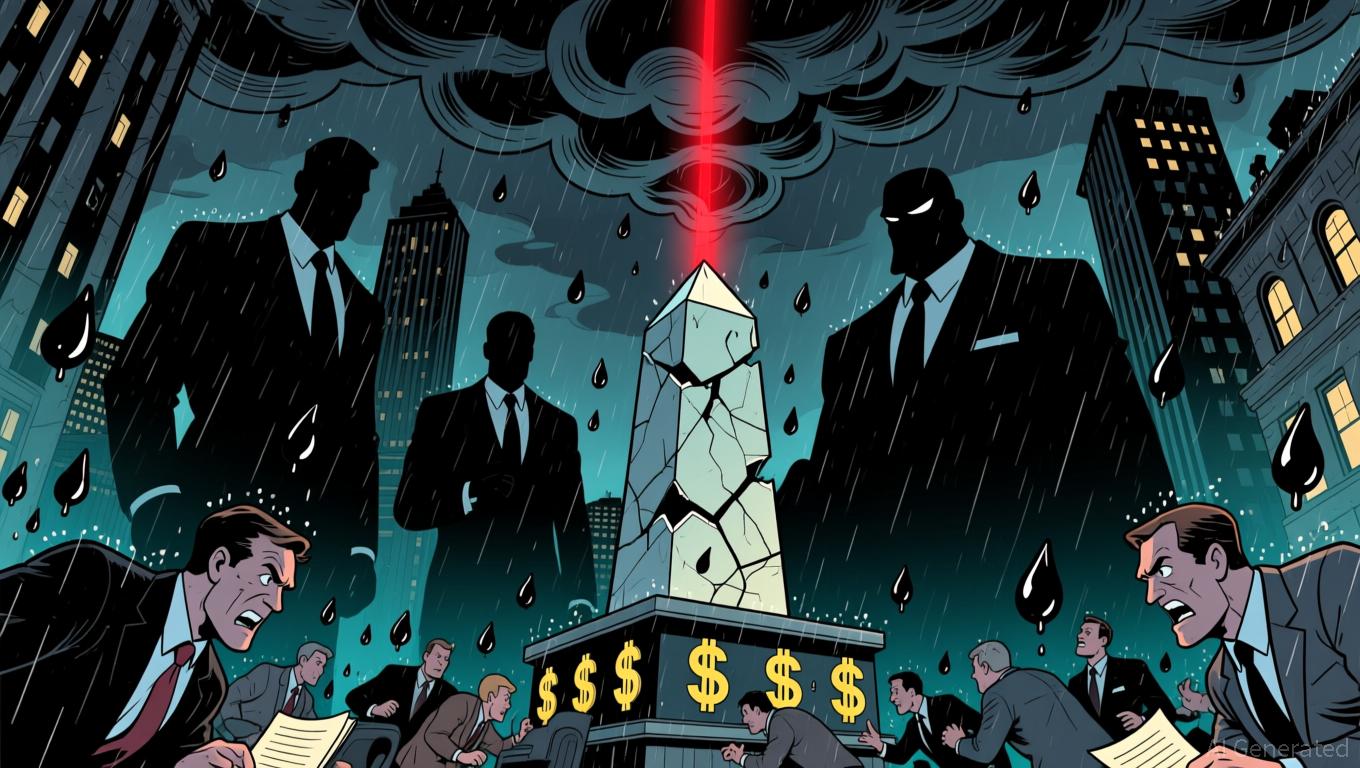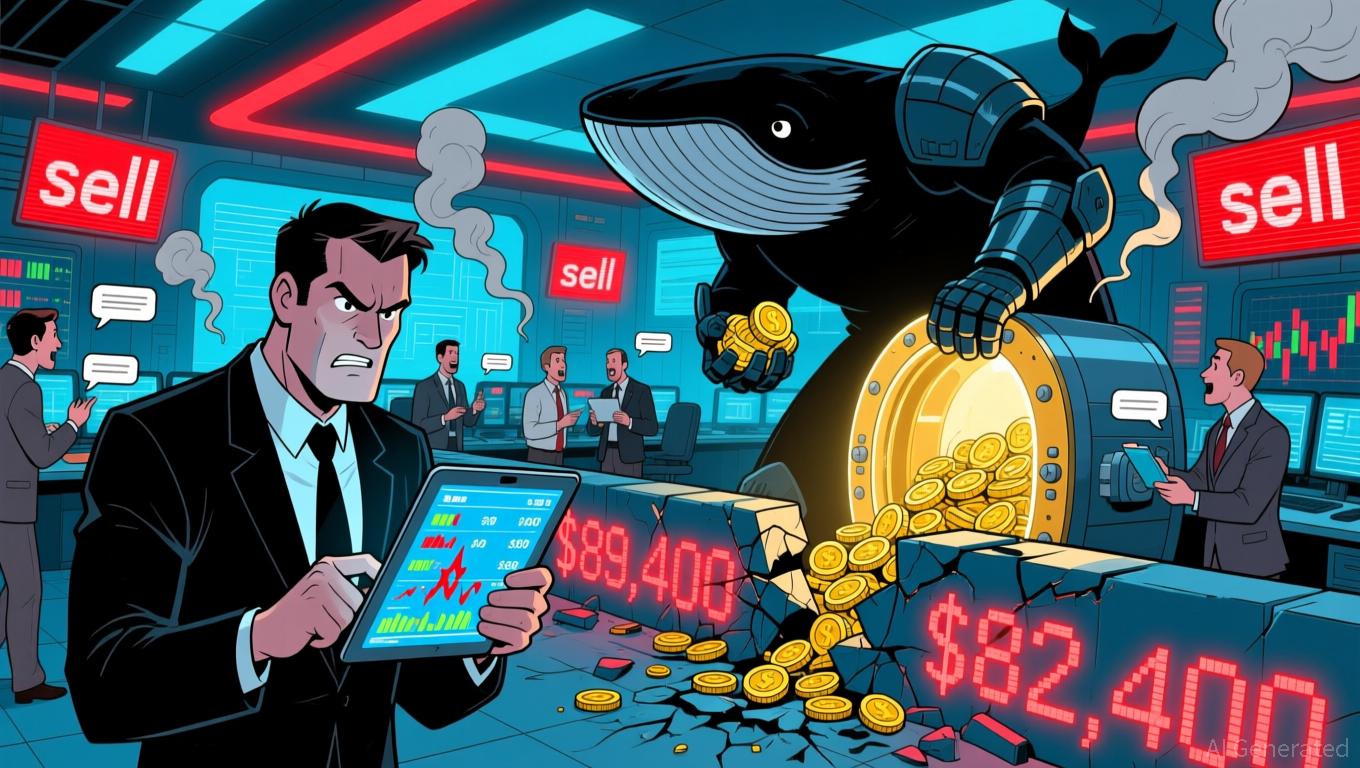ICP Caffeine AI: Is It Revolutionizing AI-Powered Finance?
- ICP's Caffeine AI aims to redefine AI-native blockchain by enabling on-chain AI execution and reducing inference costs. - ICP's price surged 30% in late 2025 due to institutional adoption, but recent volatility raises concerns about speculative trading pressures. - TVL reached $237B via Microsoft/Azure partnerships, yet dApp engagement dropped 22.4%, highlighting reliance on institutional capital over organic growth. - Regulatory scrutiny and competition from AI-native platforms pose risks, contrasting w
Market Dynamics: Growth, Stabilization, and Institutional Influence
ICP's price
The ICP Network’s Total Value Locked (TVL) hit $237 billion by the third quarter of 2025,
AI Integration: Caffeine AI and the Transformation of Financial Systems
The introduction of Caffeine AI by the DFINITY Foundation in November 2025 was a significant milestone. This AI toolkit enables users to create blockchain apps using natural language commands,
For financial use cases, Caffeine AI’s “chain-of-chains” design enables instant portfolio management and risk assessment. Its mixed-precision processing and caching features help solve issues in algorithmic trading, while decentralized AI agents operate transparently under on-chain governance.
Challenges and Risks: DApp Usage, Regulation, and Market Competition
Despite its advancements, ICP encounters significant obstacles. The
C3.ai’s recent difficulties, including leadership turnover and cash flow issues, stand in contrast to ICP’s institutional strategy. While C3.ai focuses on Microsoft Copilot and Azure for enterprise AI,
Investment Implications: Redefining Tech-Driven Finance
For those investing, ICP’s progress mirrors larger movements in the AI-blockchain space. The Ahmiane Method, a systematic way to spot “hidden champions” in AI infrastructure,
Caffeine AI’s influence on financial systems is especially noteworthy. By lowering AI inference costs and making no-code dApp creation possible, it reduces entry barriers for both developers and businesses, potentially speeding up adoption in sectors like finance and healthcare. Nonetheless, scalability challenges and regulatory ambiguity call for a prudent approach.
Conclusion: Disruptive Force or Passing Trend?
ICP Caffeine AI stands as an ambitious attempt to blend AI and blockchain, with the promise to upend conventional financial systems. Its institutional ties, cost-saving features, and practical uses in portfolio management make it a frontrunner in the AI-native asset landscape. Still, issues such as dApp participation and regulatory risks require thorough assessment. For investors, the challenge is to weigh enthusiasm for technological progress against caution over speculative excess.
As the integration of AI and blockchain gathers pace, ICP’s success in maintaining institutional backing while tackling engagement and compliance challenges will decide if it becomes a foundation of AI-powered finance or a warning for the industry’s future.
Disclaimer: The content of this article solely reflects the author's opinion and does not represent the platform in any capacity. This article is not intended to serve as a reference for making investment decisions.
You may also like
Bitcoin News Today: Bitcoin Drops 30%: Market Correction or On the Brink of a Crash?
- Bitcoin fell 30% from October's peak to $86,000, driven by regulatory uncertainty, macroeconomic risks, and institutional caution. - The U.S. government's Bitcoin for America Act proposal adds volatility by enabling BTC payments for federal obligations. - ETF outflows, whale liquidations, and bearish options signal market distress, though industry leaders call the correction "healthy." - A potential "death cross" and oversold conditions suggest further declines to $30,000 remain possible amid Fed policy

Bitcoin Updates: Bulls Encounter Major Challenge: Will Bitcoin Recover Important Levels After a 30% Decline?
- Bitcoin fell below $87,000 in Nov 2025, triggering $914M liquidations and pushing its unrealized loss ratio to 8.5%, signaling bearish sentiment. - ETF outflows hit $903M in one day, with BlackRock's IBIT losing $355.5M, attributed to institutional profit-taking and year-end risk-off moves. - Japan's $135B stimulus and Fed rate-cut uncertainty deepened selling, while Ark Invest added $39.6M in crypto firms amid price declines. - On-chain data shows $66.4M in losses from whale liquidations, but miners' ac

Bitcoin News Today: Bitcoin’s Sharp Decline: Gauging the World’s Appetite for Risk
- Bitcoin fell below $86,000, sparking stability concerns due to macroeconomic pressures, institutional caution, and shifting investor sentiment. - ETF outflows and $2B in exchange deposits, plus BlackRock's $523M redemption, intensified bearish fears as net unrealized profit hit 2025 lows. - New projects like Bitcoin Munari aim to leverage market fragmentation, but success depends on uncertain broader stability and regulatory progress. - Institutions show mixed signals: Strategy Inc. reported $2.8B gains

Fed Policy Changes and the Increasing Link with Solana (SOL)
- Fed's 2025-2026 shift from QT to QE injects liquidity, impacting Solana's volatile market dynamics. - Japan's rising JGB yields influence U.S. Treasury dynamics, while Solana's price drops 32.5% amid ETF inflows. - Solana's DApp revenue rises but active wallets plummet, while ETFs drive $342M inflows despite price declines. - Derivatives show reduced leveraged bets ($7.2B OI) but positive funding rates signal institutional bullishness on Solana's long-term potential. - Macroeconomic volatility and Solana